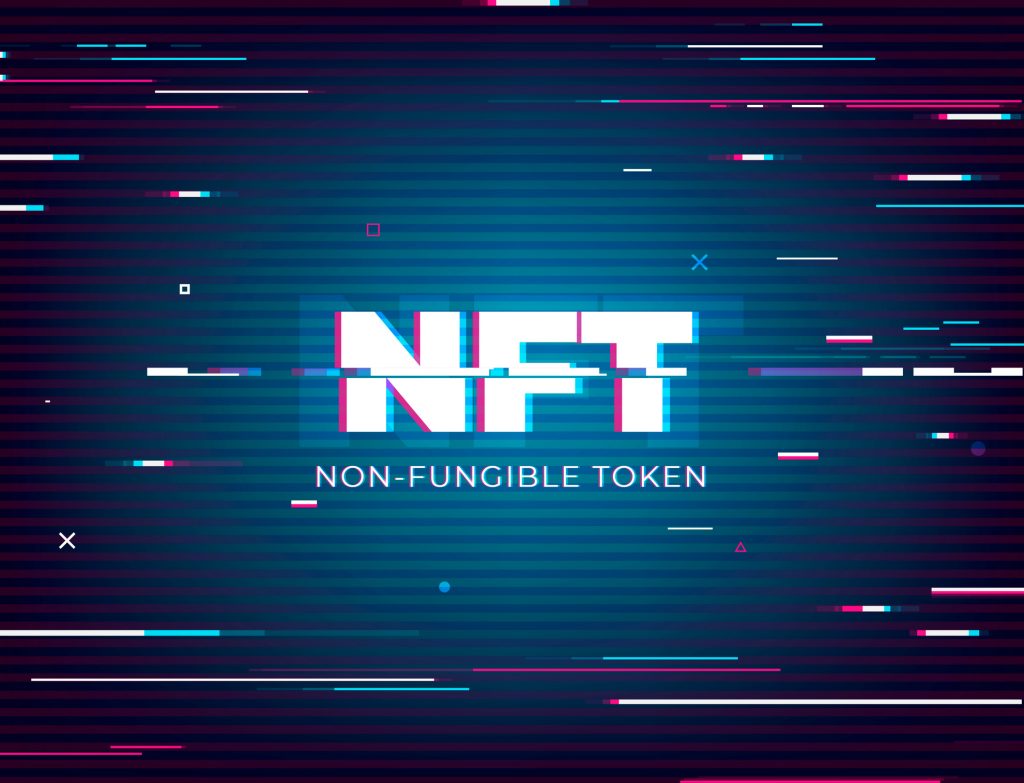The blockchain—and its accompanying NFTs and cryptocurrencies—promises to revolutionize finance—but it also comes at a high environmental cost. Here’s why—and what’s being done
In 2010, Lazlo Hanyezc paid for two pizzas with 10,000 Bitcoin. It was the first known commercial cryptocurrency transaction. It is often referenced to illustrate the staggering increase in the value of Bitcoin: Those pizzas would be worth $446 million at today’s rates. But you might also look at that transaction as a sign of things to come in terms of blockchain technology’s influence on the food industry.
“The future of finance is going to be digital. From supply chain management and tracking of goods, the blockchain is being applied to all sorts of things, including food supplies and supply chain management,” says Cale Moodie, president and chief executive officer of Neptune Digital Assets, based in Vancouver. “People are going to want to transact using cryptocurrency, so restaurants having the ability to take payment in different cryptocurrencies, it’s going to be a big one. I see cash disappearing pretty much and you’re just going to have some tokens on your phone. The ability to transact in cryptocurrency in a number of different tokens is going to be a big plus for many restaurants and owners.”
While there are advantages and efficiencies inherent in blockchain technology, there are also significant concerns, particularly in regard to its carbon footprint. While it may seem complicated and abstract, the blockchain is an important concept for business owners to understand, as it has significant real-world applications that are already being implemented. The choices you make regarding the use of blockchain technology can have a big impact.
Not long ago, we all bought into the vision of a paperless future. For the food industry that meant where there would be no physical receipts, invoices, menus or order pads. And the payoff: Going digital meant fewer trees used and a green future.
But the equation that digital equals green doesn’t necessarily add up. And the consequences of that delusion are becoming clearer as technology evolves and becomes more energy intensive. And nowhere is that more obvious than in the ubiquity of blockchain technology and its spawn of cryptocurrency and NFTs (non-fungible tokens).
Blockchain technology was developed with the intention of establishing a secure, hack-proof, decentralized system for financial transactions on the internet. The blockchain is essentially a ledger that resides on a computer network. There are potentially thousands of machines that each host a copy of the ledger. As a new transaction occurs, there must be a consensus among the blockchain to authenticate it, making it very difficult for malicious activity. This is called Proof of Work (PoW), and it’s the process behind the majority of cryptocurrencies and the burgeoning NFT (Non-fungible Token) market.
But hold up: thousands of machines? Yup. That’s a lot of energy consumption. More on that in a minute, but first some terminology.

NFTs versus Bitcoins
Bitcoins are interchangeable and have the same value, just as all loonies do. NFTs, however, are digital assets that are not interchangeable and each carries its own digital signature of authentication and is valued for its scarcity, much like a Wayne Gretzky rookie card or a Van Gogh. NFTs are unique cryptographic tokens that exist on a blockchain and cannot be replicated. They can also be used—through “tokenization”—to represent real-world assets such as real-estate or vintage bottles of wine, allowing them to traded while reducing fraud.
You may have heard how Jack Dorsey, CEO of Twitter and Square, minted an NFT of his first tweet, which sold for more than $2.9 million in a bidding war.
While that may seem unreal, the environmental impact is very real. An article posted by Frontier Group, a U.S. environmental advocacy group, reported that the average NFT transaction on the Ethereum blockchain (the second most popular blockchain next to Bitcoin) clocks roughly 35 kWh—that’s the equivalent of running a refrigerator for a month. The article went on to add that “NFT transactions also involve minting, bidding, selling and transferring a digital token… One researcher calculated that a certain artist selling two pieces of artwork used over 175 MWh, creating the greenhouse gas emissions of 21 years of a U.S. household’s electricity use.”
In a rather meta move, the David Suzuki Foundation recently launched its own NFT, called the Nature Friendly Token, to raise awareness of the environmental impact of blockchain activity.
The NFT, created in collaboration with Canadian visual artist MCPHERSO and the Toronto-based creative agency, Camp Jefferson, is priced at $50 billion, the estimated annual value of Canada’s boreal forest.
“It’s a commentary on the value of blockchain technology, juxtaposed against the incredible cost of our most precious natural resources; namely, Canada’s boreal forest,” the Foundation said in a press release. Given the high price, the assumption is that the NFT will never actually sell, and therefore not have a carbon footprint except for the relative cost of minting (being added to the blockchain).
“This is a conversation that needs to happen,” says Yannick Beaudoin, senior economist and director general for Ontario and Northern Canada for the David Suzuki Foundation. “It might as well happen early when we’re still kind of in this ‘new space.’”
Asking why
Discussing purpose is the first part of the conversation, says Beaudoin. “You can artificially create demand and I think that’s what’s happened a bit in these spaces. There’s an artificial creation of a demand for luxury.” In the case of NFTs, this is a real concern, he adds. “Are we still wasting energy for something that’s not particularly useful?”
He says it’s important for NFT creators, and users of blockchain technology as a whole, to have thoughtful informed discussions. “If they start to talk to each other about it, they can put more pressure on blockchain infrastructure providers and say ‘I would love to do this NFT but right now it’s pretty carbon intensive. I’m going to I wait for you to come up with better solutions and then I’ll get in.’”
Recently, Joanie Lemercier, a French digital artist, had been planning to release six NFTs of his art. But he scrapped those plans after doing the math and realizing that the energy costs of just 10 seconds of activity were equal to powering his studio for two years. “Considering the insane and unnecessary waste of electricity involved, I’ve decided to cancel the drop until the issue is addressed,” he wrote on his website.
He went on to explain: “The CryptoArt market is a new way for artists to distribute digital works to collectors: often digital images and video files. The blockchain technology provides secure ownership, traceability, artist commission on second market sales and a thriving marketplace…. With no travel involved and a mostly digital distribution, this new model looks like it has the potential to become a sustainable practice for artists. That’s until you understand the magnitude of the environmental impacts of the current blockchain: It is a DISASTER.” Lemercier is calling on NFT platforms to “put on hold their upcoming releases, and urgently implement NFT scaling (a process that uses less of the network per NFT) before any further release.”
Consider the (energy) source
If you do determine that blockchain is necessary, then what? “When purpose is clear, how [do] you power these things? It is a complex conversation,” says Beaudoin.
While carbon offsets are an option, Lemercier writes they are “often used as an excuse to avoid reducing your emissions in the first place and to delay further the hard decisions we have to make.”
Instead, the goal, says Beaudoin, should be to make blockchain activity a zero-emission endeavour, he says. “No one can stand up on a podium anywhere in the world and say, ‘oh, we don’t have the technology for renewable electricity,’” says Beaudoin. “We have all the technology available to us to not generate carbon when we produce energy.”
Moodie’s company has partnered with Link Global Technologies Inc. to establish Pure, a joint venture company that is developing a Bitcoin mining site in Alberta. The facility will be powered by clean energy sources and host digital mining rigs. “The goal is to get to carbon neutrality where we’re using solar and wind only and maybe some battery backup,” says Moodie. “We’re trying to reduce the carbon footprint associated with blockchain and Bitcoin mining and other token mining. I think right now they say about 40 per cent of cryptocurrency mining is renewables. For us, it’s getting that 40 per cent renewables number up substantially. Obviously, we don’t want to be associated with any environmental degradation and problems with global warming.”
Pure is also planning on developing a Pure carbon credit token or NFT, which would make carbon credit transactions more secure and trackable. “Because carbon credits have contractual value, you can actually tokenize them just like you can with anything nowadays.”
Transition the tech
Ethereum, the second-largest cryptocurrency and host to the majority of NFTs, is working on Ethereum 2.0. Instead of relying on the PoW mechanism, it will use Proof of Stake, a more energy-efficient, but still secure, process. “Ethereum 2.0 might come out and be carbon-free, but what about the other blockchain businesses? There’s a lot of them coming online now. Again, purpose is the issue, but the common thread is electricity,” says Beaudoin.
Ethereum 2.0’s release date is unclear and may be several years
In the meantime, the first Ethereum NFT scaling platform claiming to be carbon-neutral was launched in March by Immutable X. The platform compresses the amount of data required to trade or create an NFT. The company says it will buy carbon credits to offset any remaining energy use.
Ultimately, getting our heads around the potential of blockchain and controlling its carbon footprint is vital. The horse, as they say, is already out of the barn. “I think we’re headed towards a world currency, says Moodie, who is also an accountant with extensive experience in capital markets. “You’re going to see governments going to digital currencies and not only will it be currencies it’ll be tokenized valuation of everything from insurance to power to maybe healthcare as well. The potential is massive.”
And while that may be true, so too is the potential to further damage our planet if we don’t manage our use of blockchain technology. But the answer is much the same as many other threats to our environment. As Lemercier writes, “Understanding and reducing our consumption(s) is the defining challenge of our time, and tomorrow’s “habitability” of the planet depends on our actions today.”


